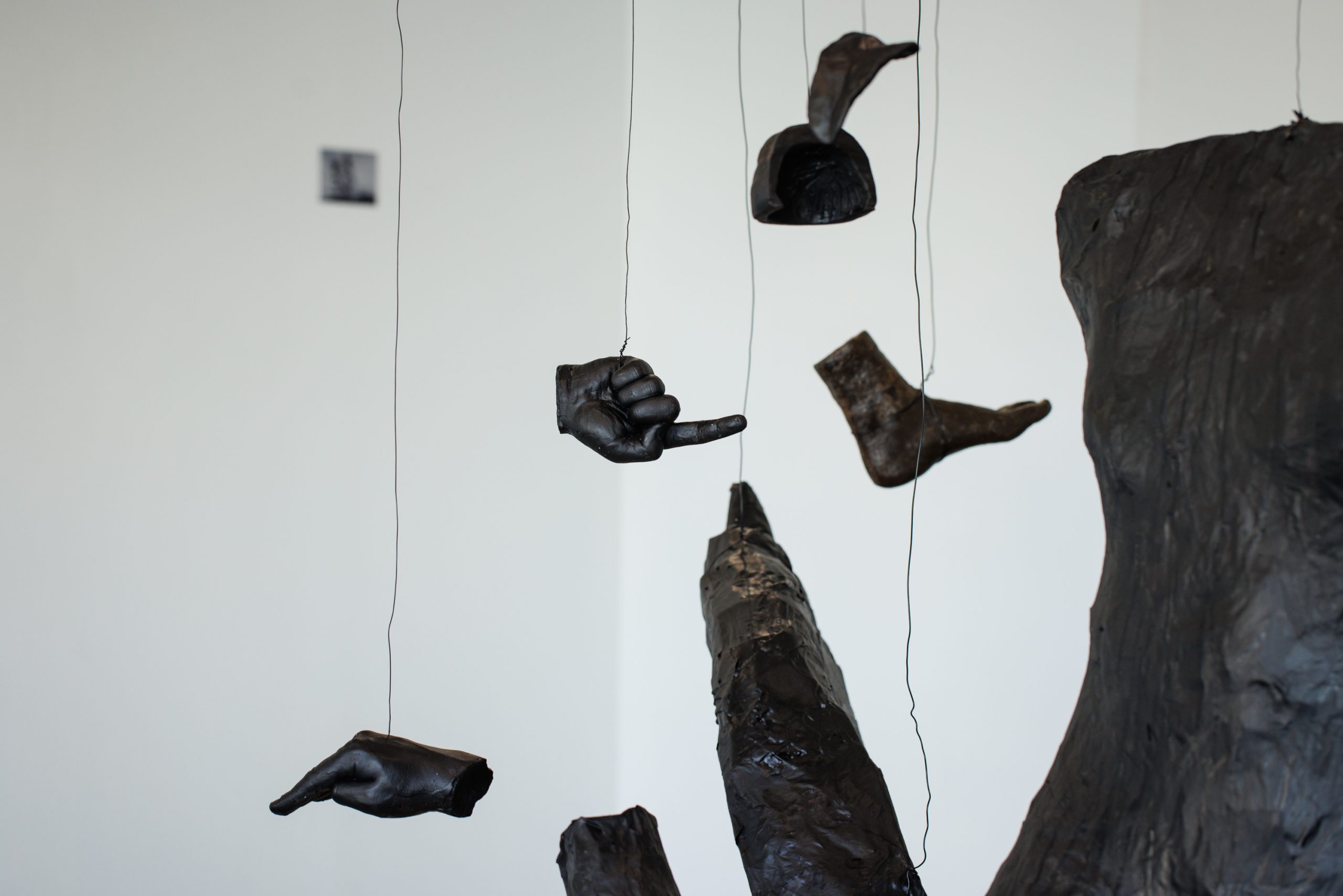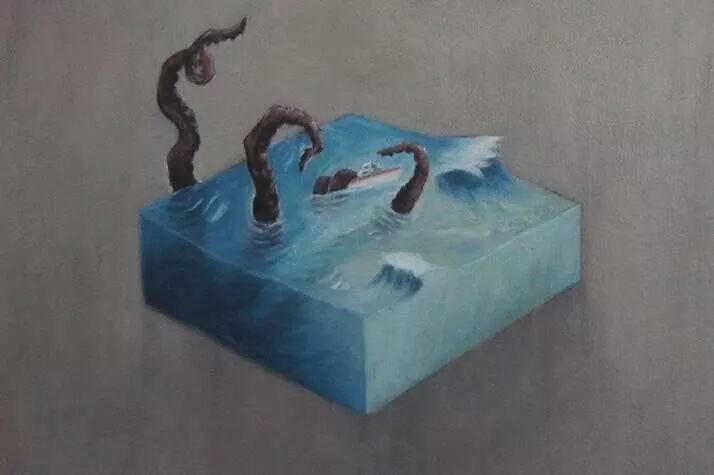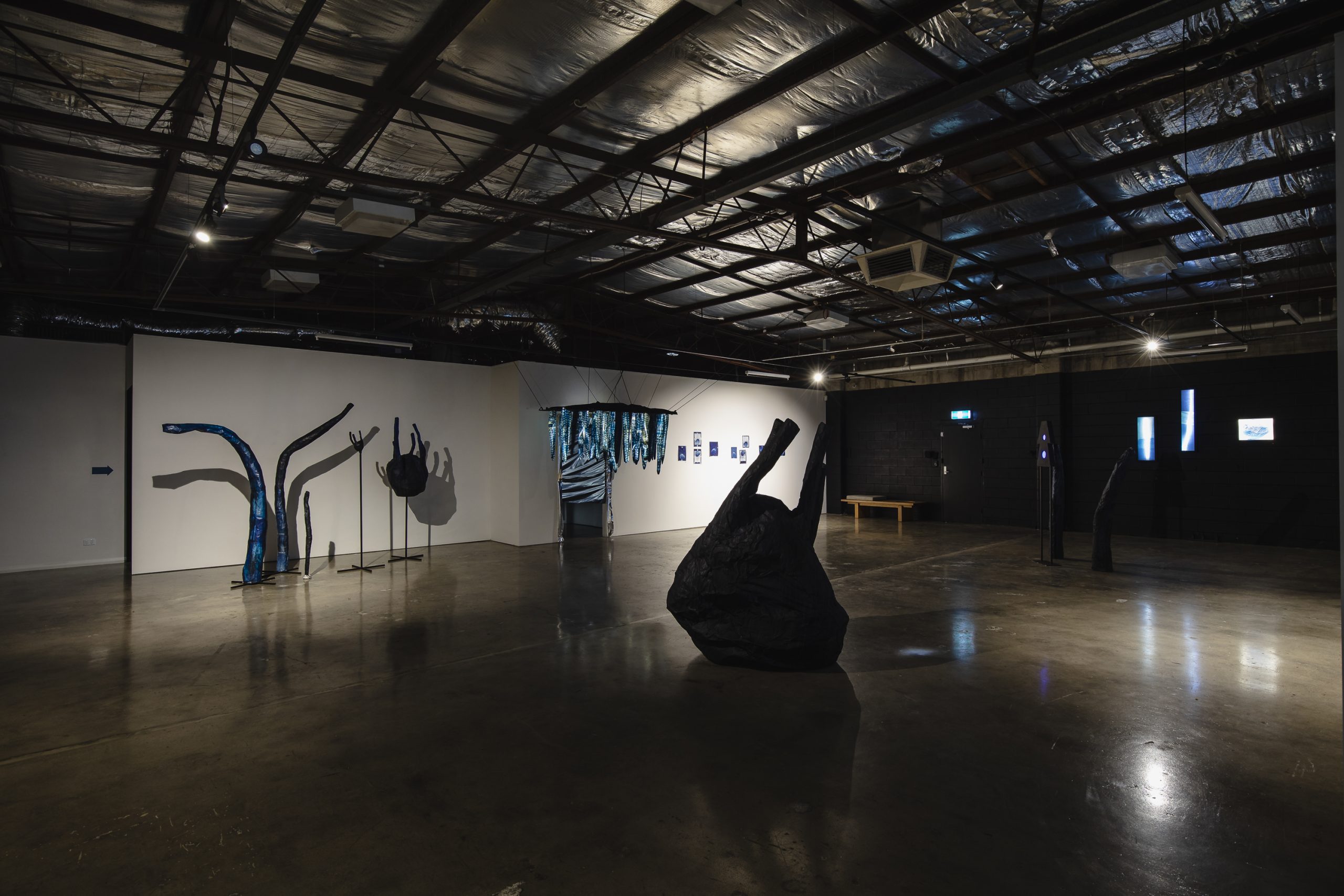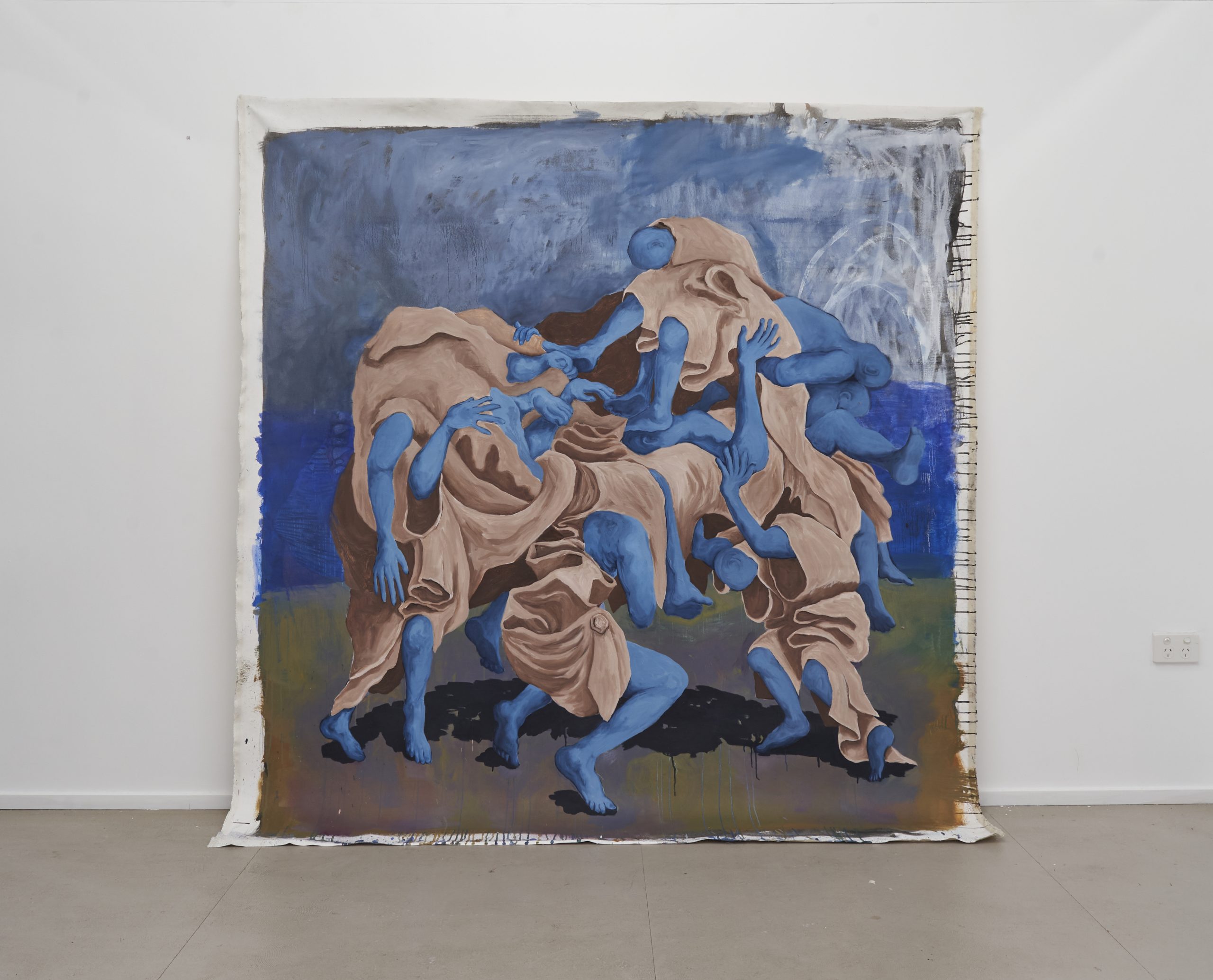
Artists Under the Great Sky
exhibited at University of Jammu in India 2016.
Artists Under the Great Sky was a group exhibition held at the University of Jammu in India. Three members of the Floating Goose Studios joined with Indian, Pakistani, and Lithuanian artists to exhibit their artworks on an international stage.
Untitled, 2015, various wood, paint, fluoro lights.























































































